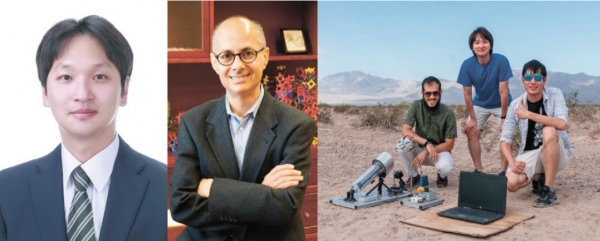
Korea is classified as a “water stress country.” Even though the annual precipitation is approximately 1,300 mm, which is not small, it is concentrated in certain periods and regions, causing inconvenience due to water shortages. Also, the lack of drinking water extends beyond just inconvenience, but life-threatening for some.
Nations across the globe are making various attempts to solve this problem. For example, seawater desalination, which uses seawater to obtain drinking water, offers a solution but it still requires fossil fuels to operate the process, and might cause pollution by releasing concentrated brine back into the sea. Another prospective technology is to harvest atmospheric water into drinking water since water in the air is accessible anywhere and anytime on the earth. However, harvesting water vapor in the atmosphere also presents challenges since it requires large amounts of energy to condense water vapor into liquid form in regions where humidity is less than 70%.
Recently, a joint team of researchers led by Professor Woochul Song from the Division of Environmental Science & Engineering and Prof. Omar M. Yaghi from the Department of Chemistry, UC Berkeley, accomplished successful atmospheric water vapor harvesting using ambient sunlight in the Death Valley desert. They found a clue to solve the water shortage phenomenon without polluting the environment using infinite resources. The study was published in the international journal Nature Water.
Metal-organic frameworks (MOFs) refer to porous materials with small pores with a size of 1~2 nm. MOFs with a large surface area act as an absorbent, capturing atmospheric water vapor. Based on this MOFs, the research team developed a water harvester that absorbs vapor from the atmosphere at night and collects absorbed vapor into liquid during the day only using solar energy without any external power.
The research team conducted the harvester field tests in two different locations in California and Arizona states, United States: Berkeley and Death Valley desert. As a result, the team produced more than twice as much as the amount of water produced by the previous water harvesting device. In addition, they succeeded in harvesting water without any footprint left in the nature even under extremely dry and hot conditions. Water was produced purely from solar energy without other energy or external power sources using their own passive adsorption system.
This study is significant in that it was conducted in extreme environments that exist on Earth, not just in laboratories, and showed the feasibility of the technology. Prof. Song explained, “We have substantiated the technology’s potential to address the escalating challenges of water scarcity, further compounded by environmental issues.” He added, “This technology embodies sustainability as it provides a reliable water resource regardless of geographic or weather conditions in the world.”


